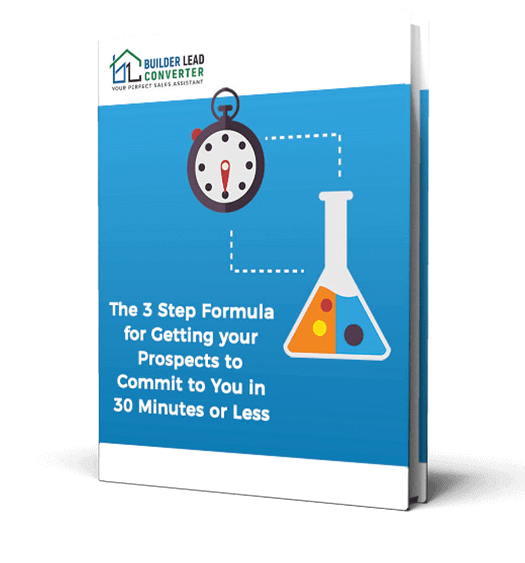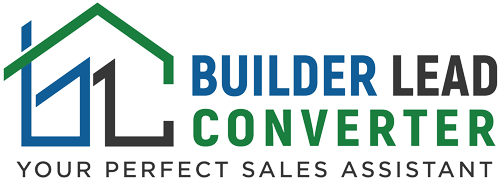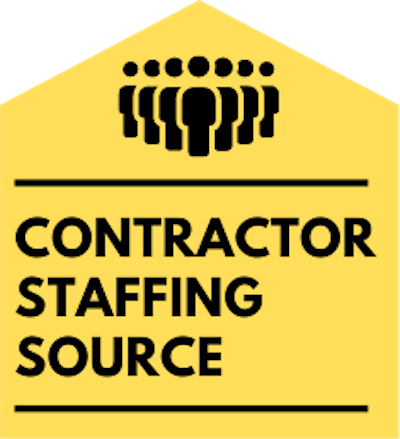Strategies for Home Building Sales Success: Tips to Increase Your Profits
Apologies, we’ll skip the welcome. We know you’re anxious to get to the meat of things. After all, you didn’t come here to be welcomed, you came here to learn how to grow your business in the home building sales industry. To maximize their (hopefully your too!) profits and get the most out of their investments.
Success in the home building industry isn’t something that just happens overnight. It takes hard work, know-how and yes, even a bit of luck. That’s why we’re here today. To give you the best strategies and tactics to help you grow your home building sales. So without further ado, let’s get on to it. Here are some of the best strategies for home building sales success to increase your profits!
Quick Overview of Key Points
Some strategies for successful home building sales include staying current on industry news and trends, developing relationships with local agents, and understanding the needs of potential buyers. Additionally, you should create marketing materials that communicate the unique features of your homes and utilize technology to stay ahead of the competition.
Prepare Your Home For Sale
When it comes to deciding whether upgrades should be made, a careful analysis must be done between cost and return on investments; however, certain changes can help showcase the maximum potential of the property without breaking your budget. Such changes include adding modern lighting or updating kitchen appliances or countertops, replacing outdated carpeting or flooring, or investing in landscaping services to make the exterior attractive.
These efforts will provide proof of recent renovations and give potential buyers peace of mind that they won’t need to suddenly reinvest thousands into future repairs. It will demonstrate your commitment to maintaining quality in your homes which can ultimately increase the value and should lead to more offers from satisfied customers who are eager to move in.
Once you have taken all preparations steps necessary to best showcase the property, you’ll be ready to start analyzing its value and attractiveness among your target audience. Your next move is understanding how buyers view each element of your home – from curb appeal down to every single detail – and what elements will drive them to purchase it.
- According to a survey conducted in 2019, the most successful strategies for increasing home building sales include offering incentives and discounts, hiring qualified professionals, and investing in marketing activities.
- A 2020 study found that targeted advertising campaigns were one of the key factors influencing the success of new homebuilding sales.
- Research from 2017 shows that 65% of builders reported increased homebuilding sales after implementing digital marketing methods such as search engine optimization and social media campaigns.
Analyzing Your Home’s Value and Attractiveness
In addition to evaluating the value of your home, it’s also important to consider its overall attractivness when making decisions to maximize profitability. If you are able to stand out among other homes on the market with attractive landscaping or unique design elements, buyers may be willing to pay more than they would otherwise. One way to make sure the exterior of your home shines is by pressure washing or adding a fresh coat of paint prior to listing it for sale. These small adjustments can go a long way towards enticing potential buyers.
By understanding both the value and attractiveness of your home, as well as making necessary improvements, you put yourself in an optimal position for a successful and profitable sale. Ready to take the next step? Advertising your home for sale strategically can be key in achieving results.
Top Highlights
Advertising Your Home for Sale
However, it is not enough to simply post information about your property. An effective marketing strategy should include detailed content that provides readers with pictures and information about your home. Stating the price range clearly, providing clear contact information, and highlighting unique features of the property can all be successful tactics when trying to attract potential buyers. Additionally, network building through online sources or through local businesses can prove to be useful for getting leads on possible buyers who may not have been reachable through traditional methods.
In order to ensure success in selling your home, it is important to understand which markets or locations a particular property might be attractive to in order to target specific individuals who may be interested in buying. Through careful analysis of prospective buyers combined with appropriate advertising techniques, you can increase the chance of success when selling your home quickly and at the right price. Now that we have discussed how to advertise your home effectively it is time to discuss negotiating the best price for your home which will come up next in this article.

Negotiating the Best Price for Your Home
One of the best ways to get a desirable outcome from the negotiation process is to provide evidence from reliable sources, such as similar homes that were recently sold in the area. This is especially helpful when there aren’t too many properties up for sale in the area and potential buyers have little choice. It will also give you a good indication of whether or not potential buyers are just trying to low ball you before even setting foot into your house or if they are genuinely willing to pay fair market value.
The key is to remain firm but flexible at the same time, as sometimes the buyer may bring something up during the bargaining negotiation that could add value or change certain parameters of your deal. The most successful sales deals usually involve both parties getting what they want: otherwise, it would defeat the purpose of negotiating in the first place.
Now that you’ve acquired some strategies on how best to negotiate prices for your home, it’s now time to look at crafting an attention-grabbing offer. Creating an attractive and alluring offer for prospective buyers is paramount if you want to ensure success in your sale.
Crafting an Attention-Grabbing Offer
When negotiating prices for homes, developing an offer that stands out and wins buyers over with its creative presentation is a great way to maximize profits. Crafting an attention-grabbing sales offer allows builders to stand out from the competition and really captivate potential customers. Here are some general tips to keep in mind:
– Focus on the positives: Highlight the standout features of the home and use language that has emotional appeal.
– Provide incentives: Incentives such as lower closing costs or free upgrades can help sweeten the deal.
– Use visuals: If possible, include pictures or video tours of the home’s attractive features when presenting an offer.
Overall, it is important to remember that crafting an attractive offer involves more than just price. Being creative and highlighting the best aspects of a property will make offers appear more desirable and help ensure successful sales.
Now that we have discussed strategies for crafting an attention-grabbing offer it is now time to move onto how to successfully navigate the complex buying process . . .
Navigating the Home Buying Process
Given that different buyers may have distinct wants and needs, it is important for builders to anticipate these differences and adjust accordingly during the home buying process. For example, when working with first time home buyers or those seeking a higher-end property, sellers should tailor their services to accommodate each customer’s individual situation (i.e personalize the introduction process; offer advice on specific budgeting/loan-related questions). Additionally, they should be aware of any changes in market sentiment as shifted demand could impact what kind of features are deemed attractive by prospective buyers at certain times and how much they might be willing to pay for them.
Real estate agents and builders need to bridge the gap between a customer’s overall desires and the available properties on the market by highlighting accesible options that best meet their criteria amidst current economic fluctuations. Equipped with this awareness, skilled negotiators can leverage positioning and focus on buyers’ unique needs while adapting if there are disparities between desired characteristics and available space or resources needed for construction.
By mastering effective methods for navigating the home buying process—from understanding potential customer’s individual situation to identifying suitable properties with optimal construction requirements—home building sales professionals can help increase profits for success. After achieving these milestones, now it is time to work on finishing strong–building trust with clients and developing strategies for closing each successful sale.
Closing the Deal for Successful Sales
In order to navigate through the home buying process and successfully close a sale, both the buyer and agent should agree that the listing price is fair market value or below. From a buyer’s perspective, they will want to know both sides of the equation – what is covered in the price and what is not included. Additionally, buyers will likely want clarification on other matters such as terms of financing and any applicable builder warranties. When these topics are discussed properly prior to signing any proposal documents, it creates clarity of expectations outlined for both parties.
In addition to providing answers to customers’ questions during negotiations, salespeople must also be able to persuade buyers that their offer is worth pursuing from a financial standpoint. During this process, it is key for home builders to explain income tax benefits such as mortgage interest deductions and all other applicable return-on-investment benefits that come with owning a house; doing so allows buyers to understand how these fiscal gains could impact their future finances. When these items are addressed, it allows customers to feel more confident about their purchase decision and thus increase the likelihood that they will sign off on an agreement quickly.
Therefore, when closing a deal in home building sales success, it is paramount that agents use clear communication in order to convey all details pertaining to pricing, financial benefits, agreements and necessary clarifications which can translate into successful sales growth over time.

Common Questions Explained
blank
What marketing strategies should home builders use to increase their sales?
On the offline side, traditional methods like door-to-door marketing, radio ads, direct mail campaigns, and billboards can still be effective for increasing home builder sales. These methods allow home builders to target people who may not be actively searching for new homes but are still interested in learning more about their options. Additionally, attending home shows and setting up vendor booths at local events can help generate leads and create brand recognition.
By using a combination of both digital and traditional marketing strategies, home builders will be able to reach more potential customers and maximize their sales opportunities.
What are the most important factors for achieving a successful home building sale?
Customer service is essential; home builders need to provide excellent customer service throughout the sales process. This includes being prompt in responding when customers reach out and providing them with honest, helpful advice about the product or answer their questions. Builders should also go out of their way to offer personalized services to make their customers feel valued.
Quality construction and materials are also necessary elements of a successful home building sale; clients need to trust that they are buying something that will be safe long-term, durable and worth the price they’re paying. If a builder skips corners to save on costs, this could reflect poorly on them in the long run.
Pricing is one of the most important elements of any successful sale – it must balance being competitive enough to attract buyers but not so cheap that it compromises quality. Home builders should take note of what the market rate for their product is and adjust accordingly based on their own level of quality and other factors that affect value such as location.
Marketing is essential for getting your company’s name out there, particularly in today’s digital world. Utilizing social media platforms, email campaigns, event-based promotions, or referrals are sound strategies to reach potential customers and spread awareness. Home builders should have a well-rounded marketing plan with both online and offline tactics to maximize reach.
Lastly, fostering a good reputation goes hand in hand with successful sales; clients want to feel secure while investing large amounts of money into an asset such as a new home. In order to achieve positive reviews from past customers, homebuilders should always strive for excellence in all areas including customer service, quality materials & construction and attractive pricing. With these in place, success should follow naturally.
How can customer service help boost home building sales?
Furthermore, providing timely and accurate information in response to the customer’s inquiries will demonstrate Your Belongingness the builder’s responsiveness and further establish trust between the customer and the builder. Additionally, by using upsells and cross-sells when appropriate, builders can increase their profits per transaction by offering additional products or services relevant to their customers’ needs. Ultimately, when individuals are given a great experience with courteous and knowledgeable customer service, they will be more likely to purchase from the same business in the future.





